|
|

Approaching Matsumae Castle within Matsumae Park. Hokkaido's one and only Japanese-style castle. Nearest train station is Kikonai Station from where you take the Hakodate Bus and get off at "Matsushiro."
|
|

To strengthen Japan's maritime defense against foreign ships, the Tokugawa government in 1849 ordered the Matsumae Clan to build Matsumae Castle in this coastal town. Matsumae Castle's main tower peers above the ticket office.
|
|

Being on the Tsugaru Strait, Matsumae was a strategic defensive position for northern Japan during the samurai era. This is the Matsumae Castle ticket gate. Small admission fee charged.
|
|
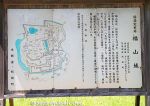
Matsumae Castle was the last Japanese castle to be built (1854) during the samurai's Edo Period. It was the base of the Matsumae Clan who ruled Hakodate and this Matsumae area (formerly named "Fukuyama"). The castle was an expansion of thei
|
|

Matsumae Castle's main tower was destroyed by a fire in 1949. The current castle tower is a 1960 reconstruction, serving as a local museum. Only the gate on the left is an original structure from the 19th century. National Important Cultural Property
|
|

Matsumae Castle's main tower is a pretty accurate reconstruction with 3 floors on the original location. Originally named "Fukuyama Castle" since the area was named "Fukuyama." To avoid confusion with Fukuyama Castle in Hiroshima,
|
|
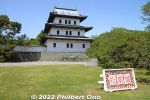
The top floor has good views of the area. This is Matsumae Castle's selfie spot. The main tower was a National Treasure until it was destroyed by fire.
|
|
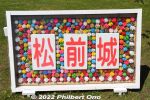
Fancy selfie sign says "Matsumae Castle." Since the current castle tower is aging and not earthquake-resistant, there are plans to replace it with another reconstruction with wood. Due to be completed in 2035.
|
|
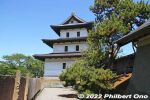
After the Edo Period, much of Matsumae Castle was dismantled except for the main tower which was a National Treasure. Unfortunately, the main tower caught fire from embers from the burning Matsumae Town Hall nearby in 1949.
|
|

Inside Matsumae Castle's main tower (1st floor). The castle was rebuilt with donations and money from the town government. Ferroconcrete structure.
|
|

Go upstairs to the upper floors.
|
|
|
|
|

Top floor of Matsumae Castle's main tower. Windows on all four sides give good views of the park.
|
|

View from the top floor of Matsumae Castle's main tower.
|
|
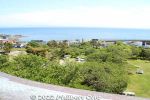
View from the top floor of Matsumae Castle's main tower.
|
|

View from the top floor of Matsumae Castle's main tower. The castle grounds have 10,000 sakura trees, making it one of Japan's Top 100 Cherry Blossom Spots. 日本さくら名所100選
|
|

Near the Gate is a Fugenzo (普賢象) cherry tree that was planted by Prince Nobuhito Takamatsu (younger brother of the late Emperor Hirohito) in 1974. It has fluffy light pink or white flowers. ('Albo-rosea' Makino)
|
|

Matsumae Castle's Honmaru Gomon Gate, a National Important Cultural Property. 本丸御門
|
|

Matsumae Castle's Honmaru Gomon Gate, the castle's only surviving, original structure.
|
|

Matsumae Castle's Honmaru Gomon Gate.
|
|

Matsumae Castle's Honmaru Gomon Gate.
|
|

Front lawn with cherry blossom trees which bloom in late April to mid-May.
|
|

Map of Matsumae Park. In spring, the park is noted for cherry blossoms.
|
|

From the 1990s, further excavations were conducted and pieces of castle roof tiles and stone wall remnants were discovered.
|
|

Matsumae Town Hall is near the castle. The previous building caught fire in 1949 which spread to the castle's main tower.
|
|

For lunch in Matsumae, we had the same food that was served to the Matsumae samurai. Very good. Served at a hot spring ryokan named "Yano." (温泉旅館 矢野) https://www.matsumae-yano.com
|
|
|
|
|